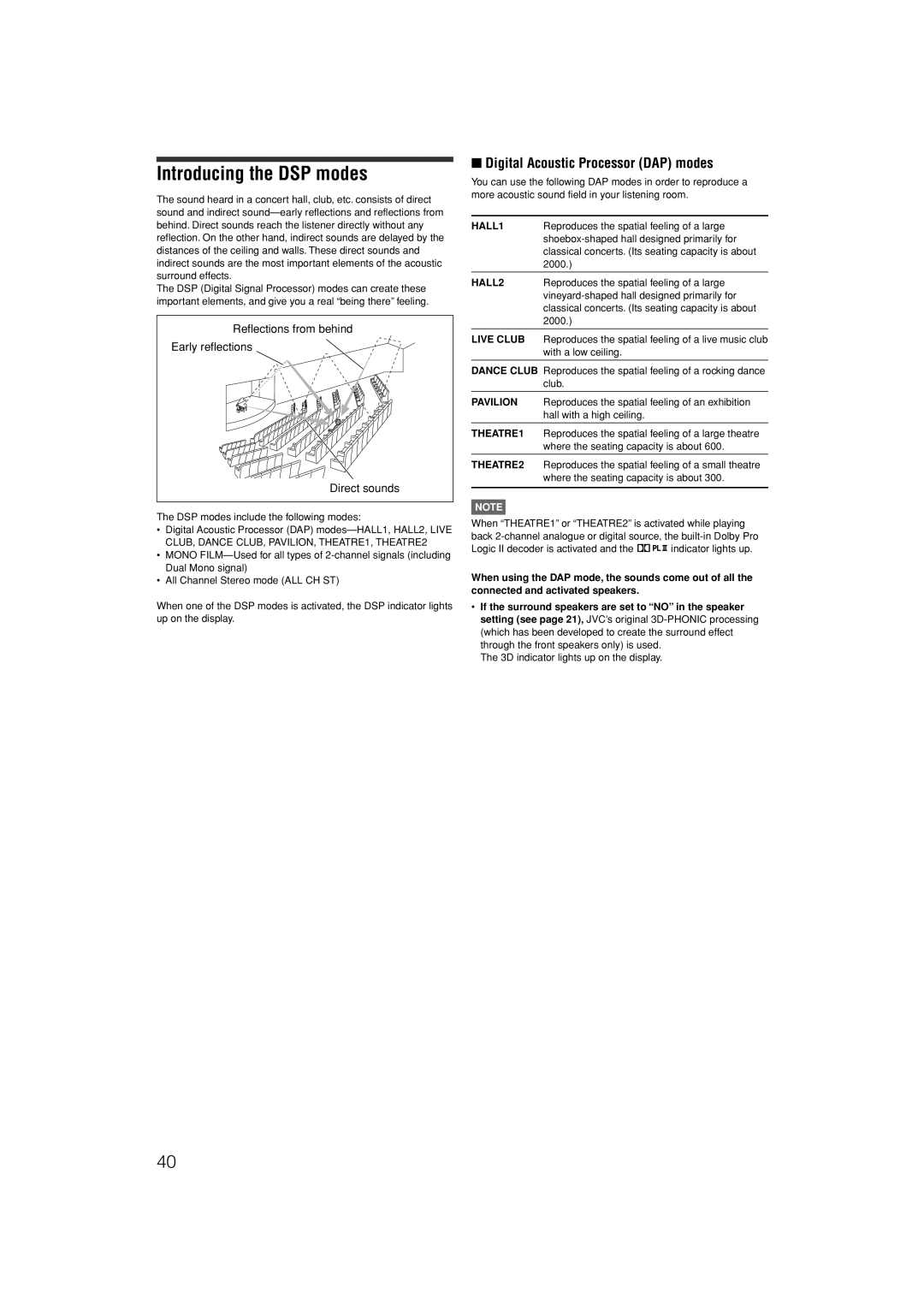
Introducing the DSP modes
The sound heard in a concert hall, club, etc. consists of direct sound and indirect
The DSP (Digital Signal Processor) modes can create these important elements, and give you a real “being there” feeling.
Reflections from behind
Early reflections
Direct sounds
The DSP modes include the following modes:
•Digital Acoustic Processor (DAP)
•MONO
•All Channel Stereo mode (ALL CH ST)
When one of the DSP modes is activated, the DSP indicator lights up on the display.
■Digital Acoustic Processor (DAP) modes
You can use the following DAP modes in order to reproduce a more acoustic sound field in your listening room.
HALL1 | Reproduces the spatial feeling of a large |
| |
| classical concerts. (Its seating capacity is about |
| 2000.) |
|
|
HALL2 | Reproduces the spatial feeling of a large |
| |
| classical concerts. (Its seating capacity is about |
| 2000.) |
|
|
LIVE CLUB | Reproduces the spatial feeling of a live music club |
| with a low ceiling. |
|
|
DANCE CLUB Reproduces the spatial feeling of a rocking dance club.
PAVILION Reproduces the spatial feeling of an exhibition hall with a high ceiling.
THEATRE1 Reproduces the spatial feeling of a large theatre where the seating capacity is about 600.
THEATRE2 Reproduces the spatial feeling of a small theatre where the seating capacity is about 300.
NOTE
When “THEATRE1” or “THEATRE2” is activated while playing back
Logic II decoder is activated and the | indicator lights up. |
When using the DAP mode, the sounds come out of all the connected and activated speakers.
•If the surround speakers are set to “NO” in the speaker setting (see page 21), JVC’s original
The 3D indicator lights up on the display.
40
